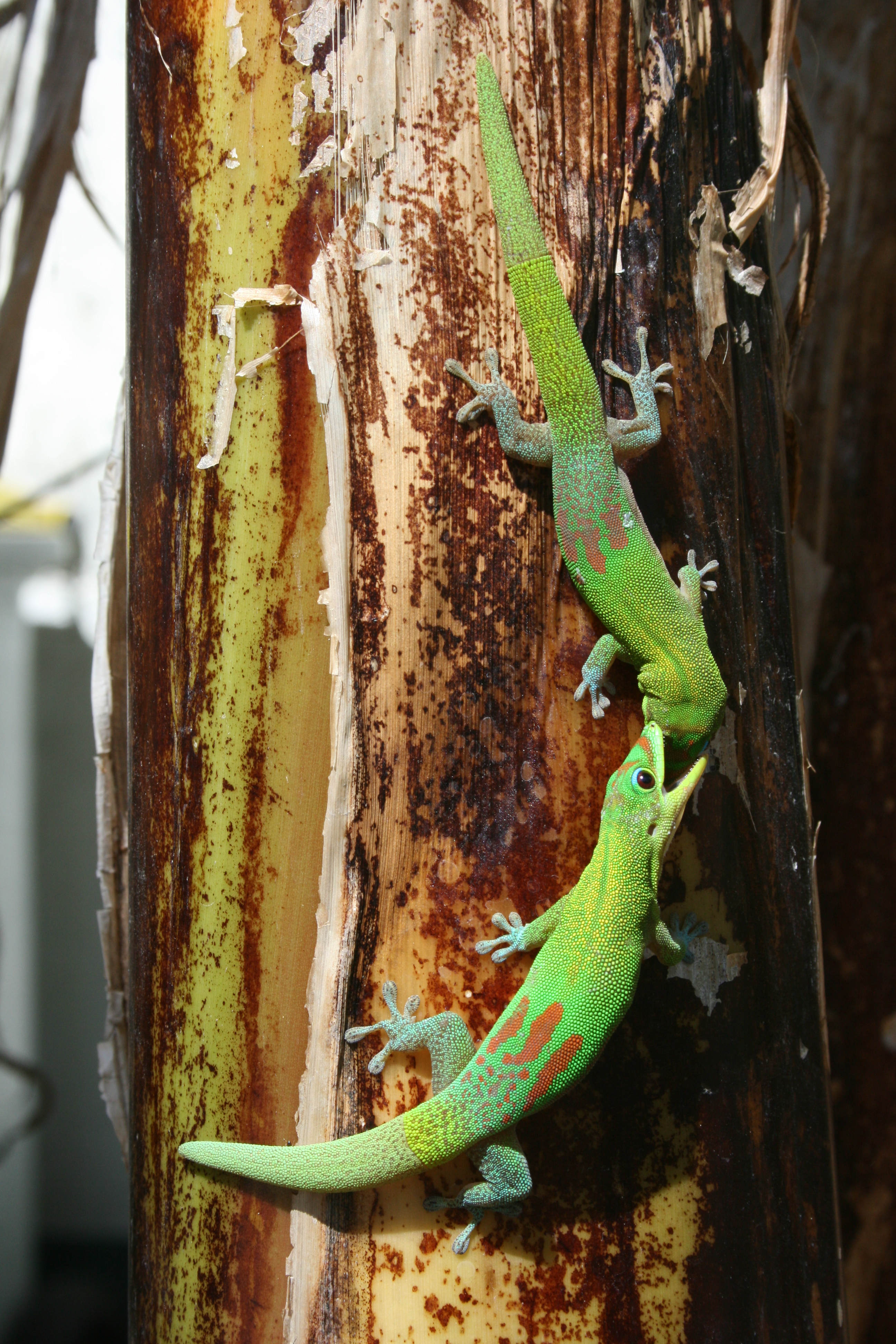Gold Dust Day Gecko on:
[Wikipedia]
[Google]
[Amazon]
The gold dust day gecko (''Phelsuma laticauda'') is a diurnal species of

 These day geckos feed on various insects and other invertebrates, and are also capable of eating other smaller lizards. They also eat soft, sweet fruit and pollen and nectar from flowers, often congregating in groups of many individuals to feed off of one plant.
These day geckos feed on various insects and other invertebrates, and are also capable of eating other smaller lizards. They also eat soft, sweet fruit and pollen and nectar from flowers, often congregating in groups of many individuals to feed off of one plant.
 The males of this species are rather aggressive. They do not accept other males in their territory. In captivity, where the females cannot escape, the males may also seriously wound a female.
The males of this species are rather aggressive. They do not accept other males in their territory. In captivity, where the females cannot escape, the males may also seriously wound a female.
gecko
Geckos are small, mostly carnivorous lizards that have a wide distribution, found on every continent except Antarctica. Belonging to the infraorder Gekkota, geckos are found in warm climates throughout the world. They range from .
Geckos ar ...
. It lives in northern Madagascar
Madagascar (; mg, Madagasikara, ), officially the Republic of Madagascar ( mg, Repoblikan'i Madagasikara, links=no, ; french: République de Madagascar), is an island country in the Indian Ocean, approximately off the coast of East Africa ...
, Tanzania (Dar Es Salaam) and on the island of Comoros
The Comoros,, ' officially the Union of the Comoros,; ar, الاتحاد القمري ' is an independent country made up of three islands in southeastern Africa, located at the northern end of the Mozambique Channel in the Indian Ocean. It ...
; it has also been introduced to Hawaii
Hawaii ( ; haw, Hawaii or ) is a state in the Western United States, located in the Pacific Ocean about from the U.S. mainland. It is the only U.S. state outside North America, the only state that is an archipelago, and the only stat ...
and other Pacific islands. It's typically seen in houses and various trees. The gold dust day gecko feeds on insect
Insects (from Latin ') are pancrustacean hexapod invertebrates of the class Insecta. They are the largest group within the arthropod phylum. Insects have a chitinous exoskeleton, a three-part body ( head, thorax and abdomen), three pairs ...
s and nectar
Nectar is a sugar-rich liquid produced by plants in glands called nectaries or nectarines, either within the flowers with which it attracts pollinating animals, or by extrafloral nectaries, which provide a nutrient source to animal mutualists ...
. It is commonly known as the mascot of GEICO
The Government Employees Insurance Company (GEICO ) is a private American auto insurance company with headquarters in Chevy Chase, Maryland. It is the second largest auto insurer in the United States, after State Farm. GEICO is a wholly owne ...
Insurance, and also as the main character of the video game series '' Gex''.
One subspecies
In biological classification, subspecies is a rank below species, used for populations that live in different areas and vary in size, shape, or other physical characteristics (morphology), but that can successfully interbreed. Not all species ...
is recognized (in addition to the nominate one): ''Phelsuma laticauda angularis
''Phelsuma laticauda angularis'' Mertens, 1964 is a diurnal subspecies of geckos. It lives in northern Madagascar and typically inhabits different trees and houses. The Gold dust day gecko feeds on insects and nectar.
Description
This liza ...
''.
Description
This lizard can reach a total length of 3.9-5.1″ (10-13cm). The body colour is a bright green or yellowish green or rarely blue. Typical for this day gecko are the red speckles on the neck and the upper back. There are three rust-coloured transverse bars on the snout and head; the upper part of the skin around the eye is blue. On the lower back there are three tapering red bars. The tail is slightly flattened. The under side is off-white. Juveniles lack the red colourations and the tail and limbs appear off-white.Diet

 These day geckos feed on various insects and other invertebrates, and are also capable of eating other smaller lizards. They also eat soft, sweet fruit and pollen and nectar from flowers, often congregating in groups of many individuals to feed off of one plant.
These day geckos feed on various insects and other invertebrates, and are also capable of eating other smaller lizards. They also eat soft, sweet fruit and pollen and nectar from flowers, often congregating in groups of many individuals to feed off of one plant.
Behavior
Reproduction
The females lay up to 10eggs
Humans and human ancestors have scavenged and eaten animal eggs for millions of years. Humans in Southeast Asia had domesticated chickens and harvested their eggs for food by 1,500 BCE. The most widely consumed eggs are those of fowl, especial ...
. At a temperature of 28 °C, the young will hatch after approximately 40–45 days. The juveniles measure 55–60 mm. They should be kept separately since the juveniles can be quite quarrelsome. Sexual maturity is reached after 10–12 months.
Captivity
This gecko is occasionally kept as a pet; with good care, this species may live up to 15 years.References
* * * {{Taxonbar, from=Q616510 Phelsuma Reptiles of the Comoros Reptiles of Madagascar Taxa named by Oskar Boettger Reptiles described in 1880